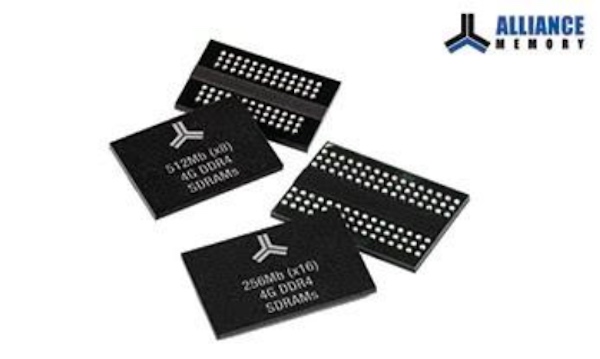Alliance Memory's new DDR4 SDRAMs combine low 1.2V power consumption with fast data transfer rates to 2400Mbps/pin and 2666Mbps/pin for increased efficiency and performance.
In October, Alliance Memory announced that it had expanded its product portfolio with two new high-speed CMOS DDR4 SDRAMs, AS4C256M16D4, and AS4C512M8D4. These new products bolster Alliance's product portfolio with improved performance over previous-gen DDR3 devices thanks to lower power consumption and faster data transfer rates in 96-ball and 78-ball packages.

Selection of DDR4 SDRAMS from Alliance Memory. Image from Alliance Memory.
Improved Performance Over Previous Generations
Compared to the previous-gen DDR3 SDRAMs, the 4Gb AS4C256M16D4 and AS4C512M8D4 reduce operating voltages from 1.5V to +1.2V for improved battery life in portable electronics. For higher efficiency in desktop computers and servers, the 256Mb x 16-bit AS4C256M16D4 and 512M x 8-bit AS4C512M8D4 offer up to 16 memory banks and deliver faster clock speeds to 1333MHz for extremely high transfer rates of 2400Mbps/pin (1200MHz) and 2666Mbps/pin (1333MHz).

A table listing the different product parts under the DDR SDRAM line.
Minimal die shrinks mean that the new DDR4 SDRAMs provide reliable drop-in, pin-for-pin compatible replacements for similar solutions. This means that redesigns and requalification can be eliminated, reducing the overall design cost. Both DDR4 SDRAMs support sequential and interleave burst types with read or write burst lengths of BL8/BC4/BC4 or 8 on the fly.
Temperature ranges of the DDR4 SDRAMs vary between models as per the below table, however, the overall commercial temperature range is 0°C to +95°C and the overall industrial temperature range is -40°C to +95°C.
Applications
The DDR4 SDRAMs have potential applications to a huge number of commercial and industrial products. These include any system that uses RAM—PCs and laptops, phones and tablets, and servers are just a few examples.





